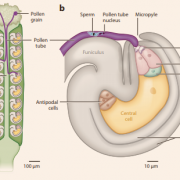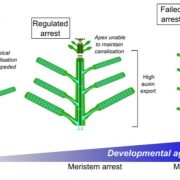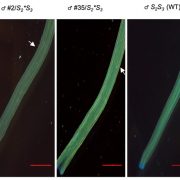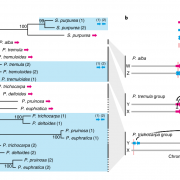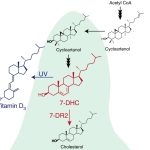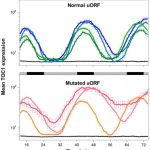KIL1 terminates fertility in maize by controlling silk senescence (Plant Cell)
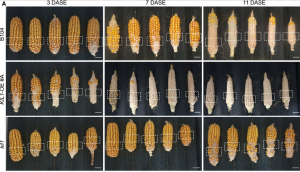 Each plant species has a defined window of time during which flowers can be pollinated in order to trigger fruit or seed development. After this time, unpollinated flowers undergo a form of senescence culminating in programmed cell death (PCD). A detailed understanding of this cell death process is thus important to generate new varieties of agronomic crops with optimized yields. Here Šimášková et al. show that the transcription factor KIL1 is an important regulator of silk base senescence and PCD in maize. The group carried out RNA-sequencing on flowers at various stages of senescence, and found that some of the most highly upregulated genes during senescence were 5 orthologs of the Arabidopsis NAC transcription factor KIR1. These genes, named KIL1-5, were able to induce cell death when overexpressed in both maize protoplasts and Nicotiana benthamiana leaves. Similarly KIL1 overexpression in maize plants promoted early senescence while kil1 knock-out plants displayed delayed senescence and PCD. Crucially kil1 plants also exhibited a longer window of fertility and greater kernel set than wild type when pollinated late in the window, suggesting a possible method increasing yield in this vital crop. (Summary by Rory Burke @rorby95) Plant Cell 10.1093/plcell/koac151
Each plant species has a defined window of time during which flowers can be pollinated in order to trigger fruit or seed development. After this time, unpollinated flowers undergo a form of senescence culminating in programmed cell death (PCD). A detailed understanding of this cell death process is thus important to generate new varieties of agronomic crops with optimized yields. Here Šimášková et al. show that the transcription factor KIL1 is an important regulator of silk base senescence and PCD in maize. The group carried out RNA-sequencing on flowers at various stages of senescence, and found that some of the most highly upregulated genes during senescence were 5 orthologs of the Arabidopsis NAC transcription factor KIR1. These genes, named KIL1-5, were able to induce cell death when overexpressed in both maize protoplasts and Nicotiana benthamiana leaves. Similarly KIL1 overexpression in maize plants promoted early senescence while kil1 knock-out plants displayed delayed senescence and PCD. Crucially kil1 plants also exhibited a longer window of fertility and greater kernel set than wild type when pollinated late in the window, suggesting a possible method increasing yield in this vital crop. (Summary by Rory Burke @rorby95) Plant Cell 10.1093/plcell/koac151



